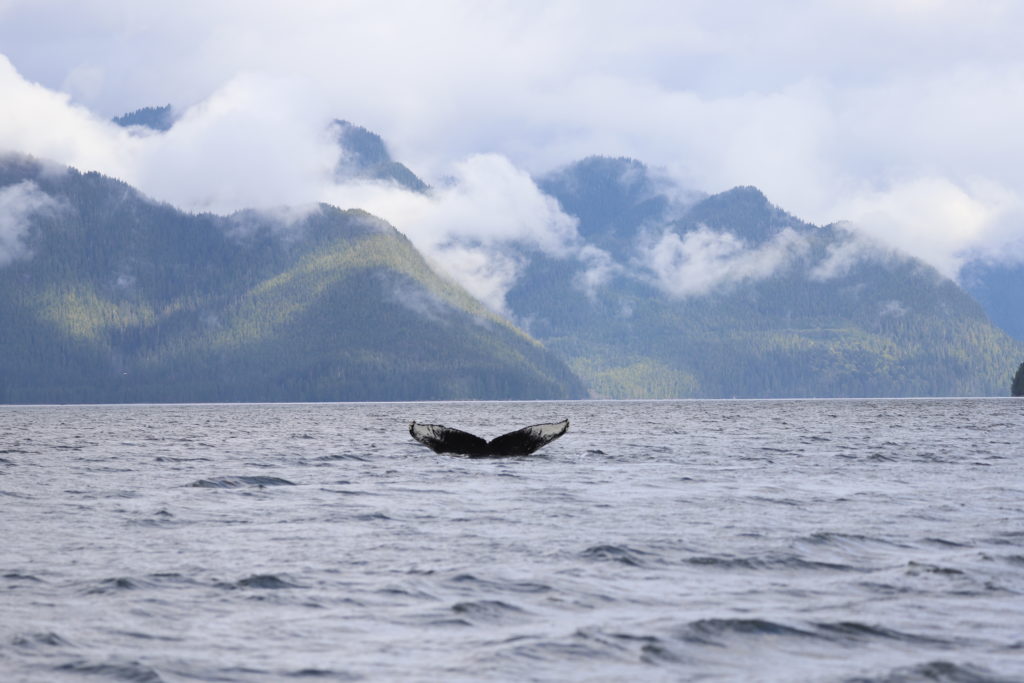Listen to the sounds of whales in the Great Bear Sea
The marine environment surrounding the Great Bear Rainforest contains some of the quietest oceans along the B.C. coastline.
But down below the Great Bear Sea’s surface, this wonderous underwater ecosystem abounds with the sound of whales.

Home to many species of at-risk marine mammals, including recovering populations of humpback whales, fin whales and orca, B.C.’s north coast is bracing for a massive increase in coastal shipping.
Soon, the songs, clicks and calls of whales will be joined by a cacophony of human-caused underwater noise.
Sound is essential to whales. Travelling faster in water than in air, sound is the primary means by which whales navigate, find food, avoid danger, and communicate and socialize with one another.
Noise from shipping can disorient and frighten whales, interfering with their ability to carry out activities important to their survival.
Take a listen to the sounds of three whales found in northern B.C. waters and learn how WWF-Canada is supporting Gitga’at First Nation efforts to keep their sea safe and sound for whales.
Humpback whale
Humpback whales exhibit some of the most elaborate singing displays in the ocean. Scientists believe that male whales do this to attract mates.
While it was previously thought that singing only occurred in tropical breeding grounds, long-term monitoring in B.C. revealed that humpbacks begin to develop and practice their songs in Gitga’at Territory before they migrate.
Fin whale
Fin whales communicate at really low frequencies that are inaudible to the human ear. But by speeding up the recording, we can hear their calls — listen for the Uuubh….. Uuubh sound occurring at regular intervals in this clip.
Orca
This west coast icon uses echolocation to hunt and mate, making loud clicks or pings that bounce off their targets to determine where they are and what’s around them.
To help conserve these at-risk species, WWF-Canada is part of the Ship, Whales and Acoustics in Gitga’at Territory (SWAG) project, an initiative with the Gitga’at First Nation and the North Coast Cetacean Society.
Together, we are monitoring underwater noise and its impacts on whales using hydrophones. This work is supporting Gitga’at efforts to engage in the management of ship traffic within their territory.
